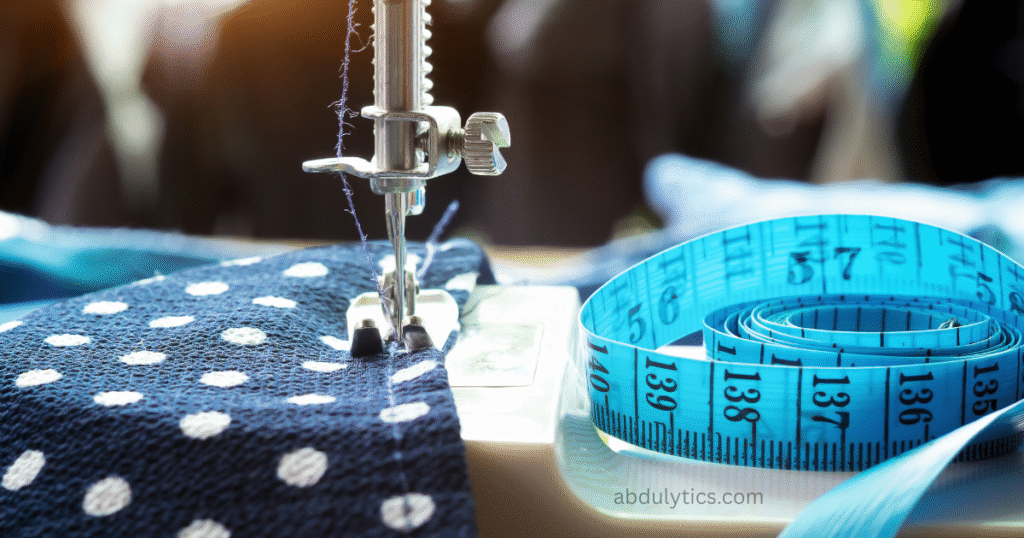A Beginner’s Guide to 9 Nahttypen
If you’ve ever tried sewing and wondered what all those fancy seam names mean—especially in German—then you’ve come to the right place. Today, we’re diving into the world of Nahttypen, or seam types, used in sewing. Don’t worry, you don’t need to be fluent in German or a professional seamstress to understand them. Whether you’re a hobby sewist, fashion student, or someone just curious about how clothes are made, this friendly guide will help untangle the mystery of the 9 most common German seam types.
Why Are Seam Types Important?
Great question! Think of seams—also known as Nahttypen in German—like the skeleton of your clothing. They hold everything together, give garments their shape, and make sure your favorite shirt doesn’t fall apart at the armpits. Different types of Nahttypen have different strengths and best uses, which is why knowing them (and using the right one) is so helpful.
Let’s Explore the Top 9 German Seam Types (Nahttypen)
These seam types are commonly used in German sewing patterns and instruction. Some have English equivalents, while others are uniquely labeled. Let’s unravel each one in simple terms.
1. Steppnaht (Topstitch Seam)
This one is pretty straightforward. A Steppnaht is a visible line of stitching often used as a design element—or for reinforcement. You’ve probably seen it on jeans or shirt pockets.
- Purpose: Decorative and functional
- Best For: Denim, shirts, jackets
Tip: Use contrasting thread for a cool visual effect!
2. Doppelsteppnaht (Double Topstitch Seam)
Think of this as the Steppnaht’s big brother—two visible lines of stitching that not only look stylish but also reinforce the seam area.
- Purpose: Extra strength and a decorative touch
- Best For: Heavy-duty clothing and jeans
3. Offene Naht (Open Seam)
Once sewn, this seam is pressed apart, so each seam allowance lies flat on either side. It helps reduce bulk and gives a clean look inside the garment.
- Purpose: Reduces thickness in seams
- Best For: Lightweight to medium fabrics
Pro Tip: This seam needs finishing (like overlocking or pinking) to prevent fraying.
4. Gestürzte Naht (Turned Seam)
Also called a right sides together seam, this is one of the basics in sewing. Sew pieces together with the good sides facing each other, then turn it right-side out.
- Purpose: Invisible from the outside
- Best For: Seams on outerwear and lined garments
Imagine sewing a pillow cover—this is the method you’d use.
5. Französische Naht (French Seam)
Ah, the French Seam. Fancy name, but actually easy to sew once you get the hang of it. It involves sewing the fabric wrong sides together first, trimming, and sewing again right sides together—trapping the raw edges inside.
- Purpose: Clean finish with no exposed raw edges
- Best For: Delicate or sheer fabrics like chiffon
Think of it like folding a burrito: the messy bits are all tucked inside!
6. Kappnaht (Flat-Felled Seam)
If you’ve ever owned a pair of jeans, you’ve definitely seen this one. The Kappnaht is super strong—great for garments that take a beating.
- Purpose: Durable, clean-looking, no raw edges
- Best For: Jeans, workwear, bags
It’s a bit more time-consuming, but totally worth the effort.
7. Doppelnaht (Double Seam)
Similar in name to the Doppelsteppnaht but constructed differently. Here, two separate seams are sewn for extra durability.
- Purpose: Super strong hold
- Best For: Outerwear and heavy fabrics where you need security
8. Abgesteppte Naht (Edgestitched Seam)
This seam is stitched close to the edge or seam line—great for keeping fabric layers flat and in place (kind of like understitching).
- Purpose: Neat finish and added structure
- Best For: Necklines, facings, and hems
It gives garments that clean, professional look without much extra work.
9. Sicherheitsnaht (Safety Seam)
As the name suggests, this one is all about strength. A Sicherheitsnaht usually combines two stitches: one to join the fabric and a second overlock to finish the edges and lock them in place.
- Purpose: Prevents seams from breaking apart
- Best For: Stretch fabrics, activewear, and everyday clothing
If you’ve got a serger, this seam is your best friend.
So, Which Seam Should You Use?
With so many seam types available, it can feel overwhelming. But here’s a simple way to decide:
- Need a clean finish? Try a French Seam.
- Working with denim? Go for the Flat-Felled Seam.
- Making lingerie or delicate garments? French Seam wins again.
- Sewing stretchy or knit fabric? Use a Safety Seam with a serger.
Choose your seam method based on what you’re sewing, the fabric you’re using, and how the garment will be worn. Practice makes perfect, so don’t be afraid to experiment!
Final Thoughts: Seam Types Are More Than Just Stitches
Learning about Nahttypen or seam types is like discovering the hidden world behind your clothes. Each stitch tells a story of design, durability, and craftsmanship. And once you know how and when to use different seam types, your sewing projects will not only look better but last longer too.
Start by mastering a few basics, then challenge yourself with more advanced seams as you grow. One day you’ll look at a garment and think, “I know exactly how that was sewn!”
Have a favorite seam or sewing tip? Share it in the comments below—we’d love to hear from you!
Want More Sewing Tips?
Subscribe to our newsletter and get weekly tricks, free patterns, and all things sewing straight to your inbox!
Happy stitching!
